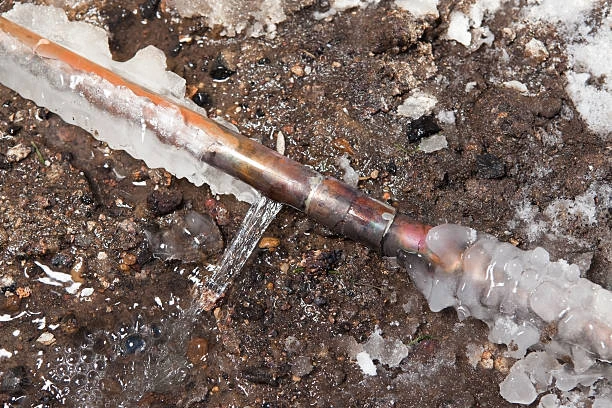Introduction to PPR Piping Materials
PPR (Polypropylene Random Copolymer) pipes have gained popularity for plumbing. Their lightweight nature and resistance to corrosion make them ideal for various applications. In recent years, environmental concerns have triggered interest in sustainable materials. Future PPR piping materials must adapt to these challenges. They should focus on reducing environmental impact while maintaining performance. This article explores the adaptability of future PPR piping materials in different environments.
The Need for Sustainable Materials
The construction industry faces increasing pressure to adopt sustainable practices. Traditional piping materials often contribute to environmental degradation. For instance, PVC pipes release harmful chemicals during production. In contrast, PPR pipes offer a more environmentally friendly option. They have a lower carbon footprint due to their energy-efficient manufacturing process. Future PPR materials must enhance this sustainability aspect. Innovations like bio-based additives can make these pipes even greener.
Enhancing Durability for Various Climates
Climate change creates diverse environmental conditions. Pipes for plumbing must withstand extreme temperatures and weather events. Future PPR materials can incorporate advanced technologies to enhance durability. For example, adding UV stabilizers can protect pipes from sunlight. This feature extends the lifespan of the piping system. Furthermore, increased flexibility allows pipes to handle temperature fluctuations. Manufacturers can create PPR composites that resist cracking in freezing temperatures.
Addressing Water Quality Concerns
Water quality remains a significant concern for plumbing systems. Contaminants can leach into the water supply from traditional pipes. Future PPR piping materials must ensure safe drinking water. They can utilize innovative barrier layers to prevent contamination. For instance, using a special coating can block chemical migration. This approach keeps the water clean and safe for consumption. Additionally, PPR materials can resist bacteria growth, ensuring hygiene in plumbing systems.
Energy Efficiency in Manufacturing
The manufacturing process significantly impacts the environment. Future PPR piping materials should aim for energy efficiency. Manufacturers can adopt new technologies to reduce energy consumption. For example, utilizing renewable energy sources can power production facilities. Implementing closed-loop systems can minimize waste. These practices not only lower operational costs but also contribute to sustainability. Future PPR pipes for plumbing can emerge from more eco-conscious manufacturing processes.
Lifecycle Assessment and Recyclability
Understanding the lifecycle of piping materials is crucial. Future PPR pipes must be designed with recyclability in mind. A comprehensive lifecycle assessment can reveal areas for improvement. Manufacturers can develop PPR materials that are easier to recycle. For example, using a single polymer type simplifies the recycling process. This strategy reduces landfill waste and encourages a circular economy in plumbing systems. Implementing take-back programs can further enhance recyclability.
Innovation in Additives and Composite Materials
Innovative additives can significantly enhance PPR piping materials. Manufacturers can explore incorporating natural fibers to improve strength. These fibers can also enhance the environmental profile of the pipes. For instance, bamboo or hemp fibers can make PPR pipes more sustainable. Such composites can provide comparable performance to traditional materials. Moreover, the inclusion of antimicrobial agents can further enhance water quality. This innovation ensures that future PPR pipes for plumbing meet modern demands.
Conclusion: The Future of PPR Piping Materials
The future of PPR piping materials looks promising. As environmental concerns grow, adaptability becomes essential. Manufacturers must prioritize sustainability in their designs. Innovations in materials and processes can lead to significant improvements. Future PPR pipes for plumbing will not only perform effectively but will also support ecological goals. By focusing on durability, water quality, and recyclability, the industry can pave the way for a greener future.
IFAN Products international standards
IFAN products strictly adhere to a comprehensive range of international standards, encompassing ISO 15874, EN 15874, ASTM F2389, DIN 8077/8078, GB/T 18742, NBR 15884, ISO 15494, EN ISO 15494, GB/T 19472, NBR 15494, ASTM 2846 (501), DIN 8079/8080 (502), ASTM F441/F441M SCH80 (503), DIN (504), DIN (505), GB/T 18993, AS/NZS 1477, CSA B137.6, NSF/ANSI 14, TIS 17-2532/1131-2535, BS 3505, BS 4346 (801), ASTM D1785 SCH40 (802), ASTM D1785 SCH80 (803), DIN (804), GB (805), GB (806), GB(901), DWV(902), ASTM D2665 (903), along with ASTM D2241, D2665, D2729, and F441/F441M series, ISO 1452, EN ISO 1452, DIN 8061/8062, GB/T 10002, AS/NZS 1477, JIS K6741, CSA B137.3, and other national and industry norms.
Connect
IFAN is a Chinese manufacturer of plastic pipes, fittings and valves with 30 years of experience. If you are interest in IFAN copper fittings, copper valves, plastic pipes and fittings, please contact us. IFAN offers you a variety of standard pipes to meet your specific needs. Click below to learn more about IFAN’s wide range of affordable and cost-effective valve products and piping system related products.
We will reply your email or fax within 24 hours.
You can call us at any time if there is any question on our production.
For more information,pls visit our webside https://waterpipefitting.com/
Pls Mailto: [email protected]
Whatsapp: +86 15088288323














Recent Comments